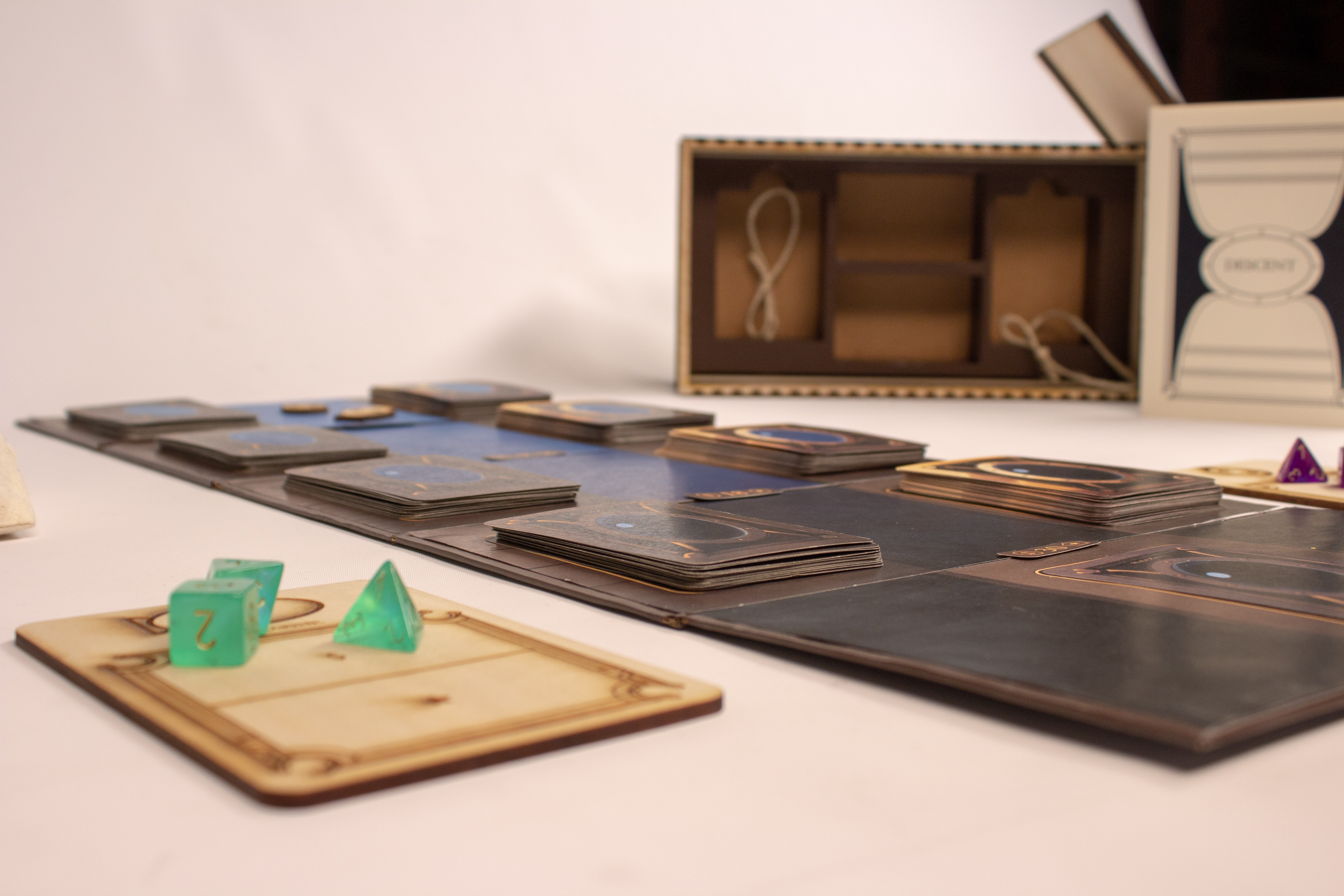descent
fall 2018
boardgame design
︎︎︎ created with Christian Townsend
︎︎︎ created with Christian Townsend
deep sea exploration.
Descent is a two player board game that revolves around deep sea exploration and the challenges and risks involved. The players slowly work through the various zones of the ocean, making discoveries which propel them into deeper and more unexplored zones. The object of the game is to make a discovery in the deepest, and least explored, zone of the ocean. The players alternate taking turns, which each consist of two phases: Discovery, and Events. First they draw a discovery card, and attempt to successfully make the discovery. The player is able to gamble on discoveries, taking a higher risk for a chance of a higher reward. Discoveries grant the player either fame or funding, which push them into the deeper zones. After making discoveries, the player draws an Event card, which can benefit or harm them, or just encourage interactions between the players’ decks. The first player to reach 30 fame and 30 funding, and roll a successful discovery in the final zone, wins the game.
Descent is a two player board game that revolves around deep sea exploration and the challenges and risks involved. The players slowly work through the various zones of the ocean, making discoveries which propel them into deeper and more unexplored zones. The object of the game is to make a discovery in the deepest, and least explored, zone of the ocean. The players alternate taking turns, which each consist of two phases: Discovery, and Events. First they draw a discovery card, and attempt to successfully make the discovery. The player is able to gamble on discoveries, taking a higher risk for a chance of a higher reward. Discoveries grant the player either fame or funding, which push them into the deeper zones. After making discoveries, the player draws an Event card, which can benefit or harm them, or just encourage interactions between the players’ decks. The first player to reach 30 fame and 30 funding, and roll a successful discovery in the final zone, wins the game.






process.
At start of creating our game we struggled bringing all of our elements together in away that was easy for us to produce in the time period we had. During this phase, we also had to consistently test the game play with mock up cards (pictured to the right) to make sure the game would work correctly when the game was fully produced.
![]()
At start of creating our game we struggled bringing all of our elements together in away that was easy for us to produce in the time period we had. During this phase, we also had to consistently test the game play with mock up cards (pictured to the right) to make sure the game would work correctly when the game was fully produced.

 .
. 


inspiration.
The branding and general visual language of Descent is based around the early art and documentation surrounding the deep sea in the late 1800s. One of our main inspirations was 20,000 Leagues Under the Sea. Each discovery card has a unique illustration that is reminiscent of scientific illustrations and traditional block-prints. The cards in both decks, the game board, and the box all have ornate painted borders that are inspired by borders of the Art Nouveau period, which was the predominant style during the height of fascination with deep sea exploration and research. The reason we wanted to refer back to early diving history was due to the current lack of focus in the scientific community towards research in this area. Since the interest isn’t currently there, we wanted to refer to what the style may have looked like when it was at its peak popularity in the general public.
![]()
![]()
The branding and general visual language of Descent is based around the early art and documentation surrounding the deep sea in the late 1800s. One of our main inspirations was 20,000 Leagues Under the Sea. Each discovery card has a unique illustration that is reminiscent of scientific illustrations and traditional block-prints. The cards in both decks, the game board, and the box all have ornate painted borders that are inspired by borders of the Art Nouveau period, which was the predominant style during the height of fascination with deep sea exploration and research. The reason we wanted to refer back to early diving history was due to the current lack of focus in the scientific community towards research in this area. Since the interest isn’t currently there, we wanted to refer to what the style may have looked like when it was at its peak popularity in the general public.


final product.



